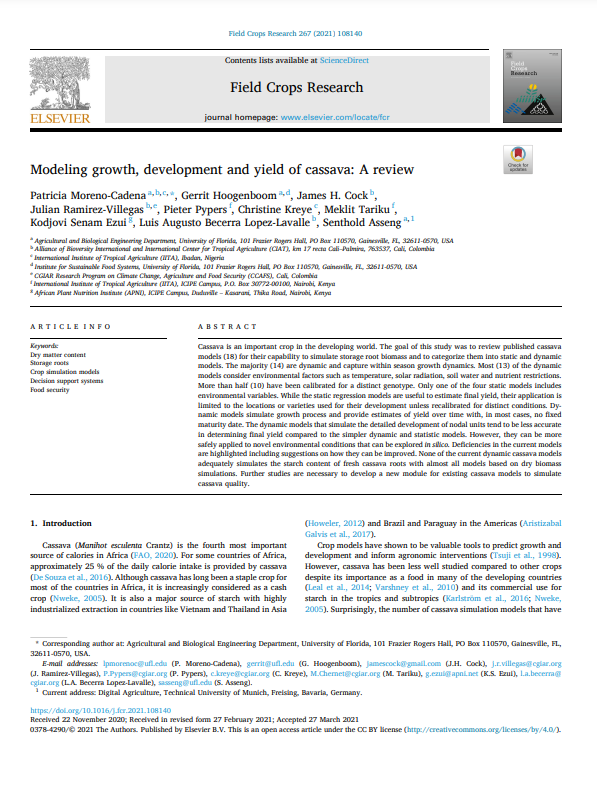Cassava is an important crop in the developing world. The goal of this study was to review published cassava models (18) for their capability to simulate storage root biomass and to categorize them into static and dynamic models. The majority (14) are dynamic and capture within season growth dynamics. Most (13) of the dynamic models consider environmental factors such as temperature, solar radiation, soil water and nutrient restrictions. More than half (10) have been calibrated for a distinct genotype. Only one of the four static models includes environmental variables. While the static regression models are useful to estimate final yield, their application is limited to the locations or varieties used for their development unless recalibrated for distinct conditions. Dy namic models simulate growth process and provide estimates of yield over time with, in most cases, no fixed
maturity date.
The dynamic models that simulate the detailed development of nodal units tend to be less accurate in determining final yield compared to the simpler dynamic and statistic models. However, they can be more safely applied to novel environmental conditions that can be explored in silico. Deficiencies in the current models are highlighted including suggestions on how they can be improved. None of the current dynamic cassava models adequately simulates the starch content of fresh cassava roots with almost all models based on dry biomass simulations. Further studies are necessary to develop a new module for existing cassava models to simulate cassava quality.
Moreno-Cadena, Patricia; Hoogenboom, Gerrit; Cock, James H.; Ramirez-Villegas, Julian; Pypers, Pieter; Kreye, Christine; Tariku, Meklit; Ezui, Kodjovi Senam; Becerra Lopez-Lavalle, Luis Augusto; Asseng, Senthold.

